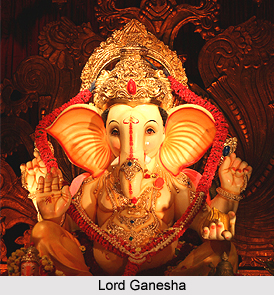 Ganesha Mangalashtakam is one of the powerful mantras of Lord Ganesha. It is believed that when a devotee chants the Sanskrit devotional hymn regularly, he is blessed with good fortune, prosperity and happiness. The mantra is blessed with the divine grace and power of Lord Ganesha. The recitation of the Ganesha Mangalashtakam also brings happiness in the life of the worshippers and their families. Moreover it helps a person to attain success in their work and removes all hindrances and obstructions from their way.
Ganesha Mangalashtakam is one of the powerful mantras of Lord Ganesha. It is believed that when a devotee chants the Sanskrit devotional hymn regularly, he is blessed with good fortune, prosperity and happiness. The mantra is blessed with the divine grace and power of Lord Ganesha. The recitation of the Ganesha Mangalashtakam also brings happiness in the life of the worshippers and their families. Moreover it helps a person to attain success in their work and removes all hindrances and obstructions from their way.
Ganesha Mangalashtakam hymn is as follows-
Gajaananaaya Gaamgeya Sahajaaya Sadaatmane
Gaureepriya Tanoojaaya Ganesaayaastu Mamgalam
Naagayagnyo Paveedaaya Natavighna Vinaasine
Namdyaadi Gananaathaaya Naayakaayaastu Mamgalam
Ibhavaktraaya Chemdraadi Vamditaaya Cidaatmane
Eesaana Premapaatraaya Naayakaayaastu Mamgalam
Sumukhaaya Susumdaagraat Kshiptaa Mrutaghataaya Cha
Surabrumda Nishevyaaya Ceshtadaayaastu Mamgalam
Chaturbhujaaya Chamdraardhavilasan Mastakaaya Cha
Charana Avanata Anamtata Aranaayaastu Mamgalam
Vakratumdaaya Vatave Vanyaaya Varadaaya Cha
Viroopaaksha Sutaayaastu Mamgalam
Pramodam Odaroopaaya Siddhi Vignyaanaroo Pine
Prakrushtaa Paapanaasaaya Phaladaayaastu Mamgalam
Mamgalam Gananaathaaya Mamgalam Harasoonane
Mamgalam Vighnaraajaaya Vighahartrestu Mamgalam
Sloka Ashta Kamidam Punyam Mamgalaprada Maadaraat
Pathitavyam Prayatnena Sarvavighnanivruttaye
Iti Sree Ganesa Mamgalaashtakam
This article is a stub. You may enrich it by adding more information to it. You can send your write-up at content@indianetzone.com




















